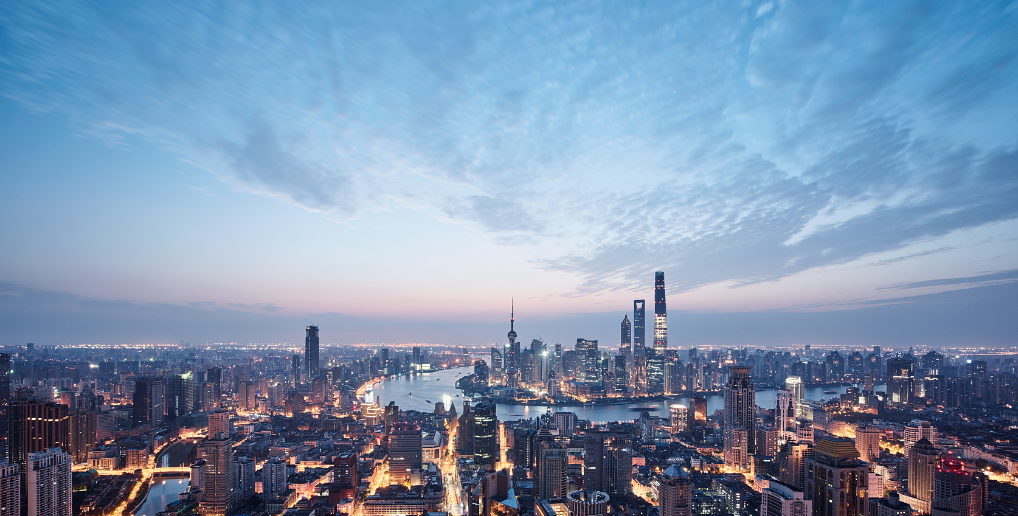I. Purpose of architectural lighting
According to the visual requirements of different buildings and different occasions, the lighting area can obtain good visual effect. And has that advantage of reasonable illumination, good color rendering and uniform brightness distribution. At the same time, on the basis of making full use of natural light, the best control mode is selected to achieve the purpose of energy saving and consumption reduction.
II. Problems in Lighting Design of Building Facade
(1) Only the brightness of the light is the criterion.
Building facade lighting is one of the main forms of night lighting in cities. Building lighting at night emphasizes an attractive visual effect, which is completely different from that under sunlight in the daytime. Sometimes in order to achieve this attractive visual effect, some designers will adopt the concept of "the brighter the better". However, this kind of unreasonable night lighting will produce a lot of energy consumption and light pollution, so we must think and study more about the electricity consumption and safety of building facade lighting.
(2) Relying only on the theory of lighting technology
In the 21st century, many theoretical textbooks on architectural lighting have been published in China, which provide more theoretical basis for the development of lighting technology. However, only from the perspective of lighting technology or relying on the calculation of illumination, lamp parameters, and simply the study of human vision, the design of building facade lighting is still one-sided.
(3) The characteristics of urban lighting are not obvious
The architectural lighting effect of a city must reflect the individual characteristics of the city. For cities with different geographical environment and historical culture, the design of architectural lighting should be carried out around their geographical, historical and cultural factors, excavate the genes of regional culture, and firmly grasp the image characteristics of a city or lighting object. As we all know, Venice is a city with bright lights like a water sightseeing road. This is because the building lighting is equipped with incandescent bulbs with an interval of 20 meters and a vertical downward illumination of about 6 Lux. Most of the light can be projected on the wall of the riverside road, which complements the light from the street window and makes people feel very comfortable. Although the incandescent lamp has the shortcomings of short life and low luminous efficiency, it has become a successful example when used in Venice, a city with small street space. Such urban planning and design also fully reflects the characteristics of urban architectural lighting.
3. Embodiment of lighting character of Chinese style, European style and modern architecture
Nightscape lighting is not only a culture, but also an art. Protecting the city's historical and cultural features and architectural art characteristics is an extremely important design concept in lighting, so architectural lighting design should be based on different ways of dealing with architectural art, reasonably and effectively express the character of architecture and add color to the city.
(I) Chinese architectural lighting
1. Lighting focused on the roof
An obvious architectural feature of traditional Chinese architecture is its large roof, but it will not be clumsy after the treatment and decoration of curved surface and curve. Because of the special roof form of traditional Chinese architecture, the night lighting of the roof should be emphasized, so that the charm of ancient buildings can be expressed. The form and material of the roof and the bright color painting decoration on the brackets will have a great impact on the lighting. If the roof is paved with tiles, a small spot light can be set up at the cornice to project light upward, or a small spot light can be set up along the ridge to project light downward, which not only shows the structural beauty of the traditional sloping roof, but also reflects the outline of the roof warping. You can also use the way of outlining the roof to depict the essence of the unique form of the roof. Similarly, the ridge and other details of the roof can also be highlighted by small fiber optic lamps.
2. Take the house as the main lighting object
Although the roof form of ancient Chinese architecture is exquisite, we can use the lighting method of not lighting the roof but lighting the brackets and body under the roof in the direction of buried projection to pursue the effect of exquisite silhouette, which shows the implicit beauty of traditional Chinese architectural art. There are also some colonnaded buildings, which illuminate the inner walls and make the outer components form a silhouette effect, which is also full of the artistic conception of Chinese painting.
3. Lighting combined with roof and body
Brightening the sloping roof and illuminating the columns or walls of the roof is also a way to express traditional Chinese architectural lighting. But the illumination that uses photograph to combine, appear easily each part is equal illume or all parts of the building are very bright circumstance, accordingly, want to notice the light and shade relation of architectural illumination. Lighting is arranged according to the column positions of the bright, secondary and slightly equal bays of the building, highlighting the rich relationship between the rhythm of the column body and the brackets under the eaves. Lighting enhancement measures can be taken to make the upper plaque more eye-catching. The exterior of the building can also be equipped with spot lights, which are hidden in the greening of the surrounding environment, and can even be combined with greening lighting.
(II) European-style architectural lighting
There are still a large number of European-style buildings in Shanghai, Harbin and other cities in China. We should fully consider the relationship between urban environment and order, and pay attention to the overall image of the building while respecting the building itself. The lighting is arranged according to the repeated columns in the facade modeling of European-style buildings, and the lighting is organized by "three horizontal and five vertical", so that the lighting also forms multiple sections to illuminate the building and the attenuation of the lighting is reasonably controlled, which can highlight the complex and rich light and shadow relationship of the columns, balconies, windows and other components in European-style buildings. In the European-style buildings we can see, such as the sunset column and the base, we can use the underground lamp with asymmetric light distribution according to the location, and at the same time, we can try our best to use a single light color for lighting design.
(III) Modern architectural lighting
For modern architecture, it is mainly based on the individual characteristics of the building, emphasizing the block and volume of the building, and making full use of the inherent decoration of the building to form light and shadow changes. The common ways of building facade lighting are as follows:
1. Floodlighting
It refers to the lighting method that the spot light is installed outside the building and the light source directly illuminates the facade of the building to make its brightness higher than that of the surrounding environment, so as to reshape and decorate the image of the building at night. This lighting method belongs to the basic form of building facade lighting. This lighting effect can not only highlight the image of the building, but also effectively show the shape, three-dimensional sense, material texture and decorative details of the building. The light sources used for lighting include halogen tungsten lamp, metal halide lamp and high-pressure sodium lamp, and the lamps used are special projection lamps. Floodlighting shall adjust the illuminance or brightness of the facade surface of the illuminated building, so that the building has clear layers and strong three-dimensional sense and highlights the key parts, so as to avoid illuminating the whole building evenly. Floodlighting should choose a reasonable projection direction and angle to avoid vertical projection of the illuminated surface, resulting in a weak three-dimensional sense of building lighting. The installation of projection equipment should be hidden as far as possible, so as to see the light but not the lamp. For example, the night lighting of many buildings such as Nanjing Road Commercial Street in Shanghai uses floodlighting, but in comparison, residential buildings, hospital inpatient departments and glass curtain wall buildings are not suitable for this lighting method.
2. Contour lighting
Contour lighting takes the dark night sky as the background, places the light source along the shape and decorative details of the illuminated building, and outlines the outline of the building. It often uses string lights, neon lights, Meinai lights, light guides, all-body luminous fiber lights, linear lighting and other equipment for lighting.
3. Internal transparent lighting
Internal transparent lighting is to install the light source in the building and emit light through the glass. The common design methods are indoor light reflection, light strip bracket lighting and direct outward lighting. The biggest characteristic of the design method of transparent lighting in buildings is that while achieving the effect of facade landscape lighting, the use of indoor lighting saves costs and is easy to maintain. Internal transmission lighting is often used for commercial or entertainment and other service buildings, especially for glass curtain wall structure. However, due to the light absorption and transmission of glass, if the way of external lighting is used, it will not only fail to illuminate the building, but also cause a lot of light pollution. The structure is hollow, and it is difficult to illuminate the upper part of the tower body despite the use of several kilowatts of floodlights. Later, through research, an internal transparent lighting method was used, and internal transparent lighting lamps were installed at different heights inside the tower, enabling it to illuminate from bottom to top, creating a magnificent lighting effect and becoming a landmark building in Paris, France.
IV. Design Principles of Building Facade Lighting Design
(1) Conform to the law of aesthetics
First of all, an excellent painting should conform to the aesthetic law, and an excellent outdoor architectural lighting work must also conform to the aesthetic law. The aesthetic method of buildings is to express the geometric beauty, sense of hierarchy and three-dimensional sense of buildings according to the combination of points, lines, surfaces, bright and dark, dynamic and static. For example, point: when the optical fiber luminous points are evenly arranged on the curved surface and spherical surface of the building, the brightness and density of the luminous points will be different from different angles, forming a three-dimensional effect on the surface of the building; line: when the outline of the building is relatively rich, linear lighting can be used to outline the performance; surface: the flat and straight part of the construction surface can be illuminated by narrow, medium and wide beam floodlights. At the same time, it is necessary to narrow the difference between the building and the surrounding environment in terms of brightness or color, so as to reflect the harmonious beauty with the surrounding lights. Through the application of these three elements in the plane composition, the lighting effect of the whole building is integrated. Sometimes the lighting facilities around the building will bring adverse effects to pedestrians and the surrounding environment, so aesthetic principles can be applied to the design of lamps and lanterns, and the lamps can be designed into elegant shapes. At the same time, on the premise of avoiding affecting the normal growth of plants and facilitating maintenance and management, it is hidden in the branches and leaves of big trees, so that it can become a beautiful small landscape during the day and night. For example, a pillar lamp with a 600mm diameter spherical transparent shade installed on the coast of Sydney has a built-in polycarbonate reflector, which can reflect light to the ground. The lampshade with excellent transparency makes people hardly see its existence in the daytime, only in the morning and evening when the sun hangs in the air, the golden color will appear on the lampshade.
(2) reduce glare interference and reflect human concern.
In order to reflect the decorative effect of dim lights in modern society, a large number of lights are used in the artistic treatment of night lighting in many buildings. However, the installation position, height and projection direction of lamps and lanterns may form glare, which affects people's normal rest at night, and also increases the hidden danger of social security. Therefore, it is necessary to debug the lamp position, projection angle and projection direction of the lamp. This kind of debugging generally adopts the way of projecting light from bottom to top and from outside to the building. The purpose of projecting light from bottom to top is to scatter the influence of glare in the air and reduce the influence rate of glare on pedestrians and vehicles on the street. When projecting light to the building from the outside, the boundary of the building should be shaded so as not to affect the lighting of the surrounding buildings. Therefore, when designing the scheme, the layout should be considered comprehensively and appropriate measures should be taken to avoid it. We walk in a safe light environment society, which can reflect the interaction between people and light both materially and psychologically.
(3) Energy-saving and environmental protection design principles Many building facades mostly use high-power and high-brightness lighting, resulting in excessive electricity consumption. Therefore, energy-saving issues must be considered in the design of lighting in buildings, and high-quality energy-saving light sources, lamps and equipment with long life and high light efficiency, such as LED, optical fiber and solar photovoltaic lighting, should be used as far as possible. With the continuous improvement of local economic level, the proportion of places using led light source will gradually increase. First of all, led light source has the advantage of compact size, which is easier to hide in building components. Secondly, the LED light source has a relatively long service life, which ensures that the lamp can be maintenance-free for a long time. In addition, LED also has the advantage of low power consumption. The use of LED light source is not only to replace the traditional light source, but also to use its unique characteristics to create its own lighting design and construction scheme. Now, solar photovoltaic technology has also attracted great attention in the world of lighting, so battery technology meets the coefficient of hail, lightning and weathering resistance, and ensures building safety.
Summary: Nightscape lighting design is to use the most beautiful lighting language to tell the story of the building at night, with green lighting as the premise, to create a world of night!











